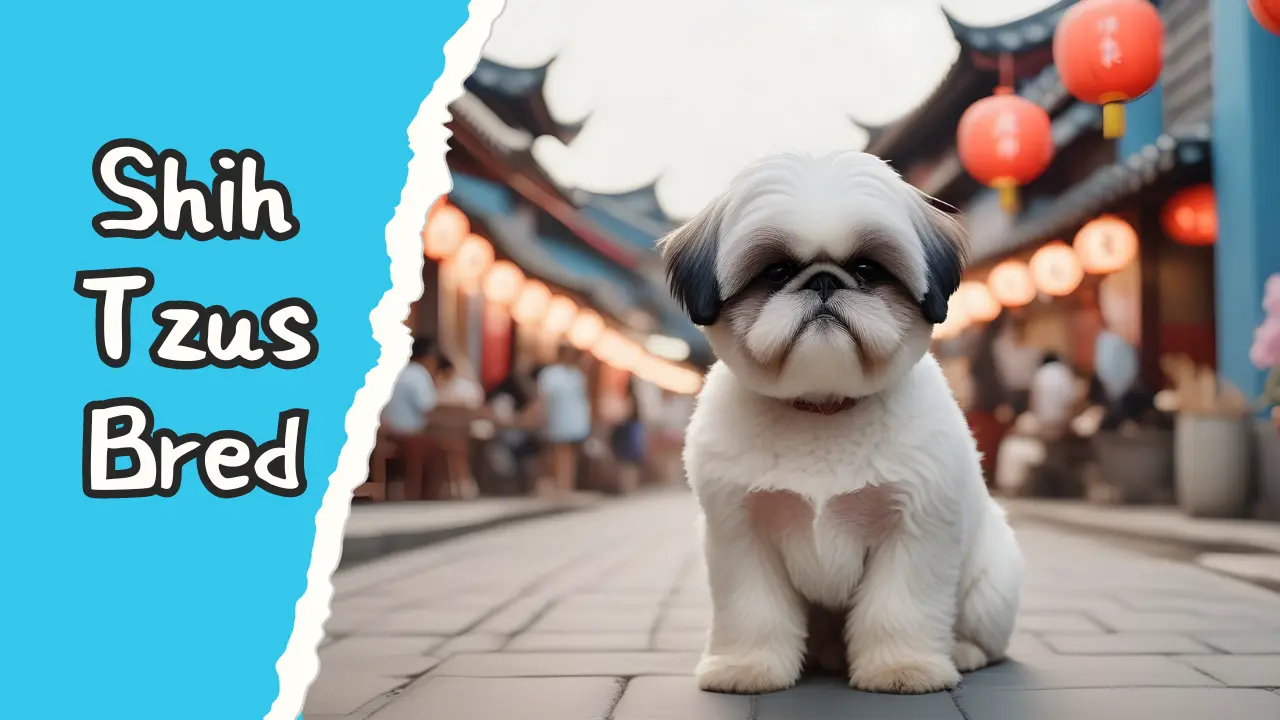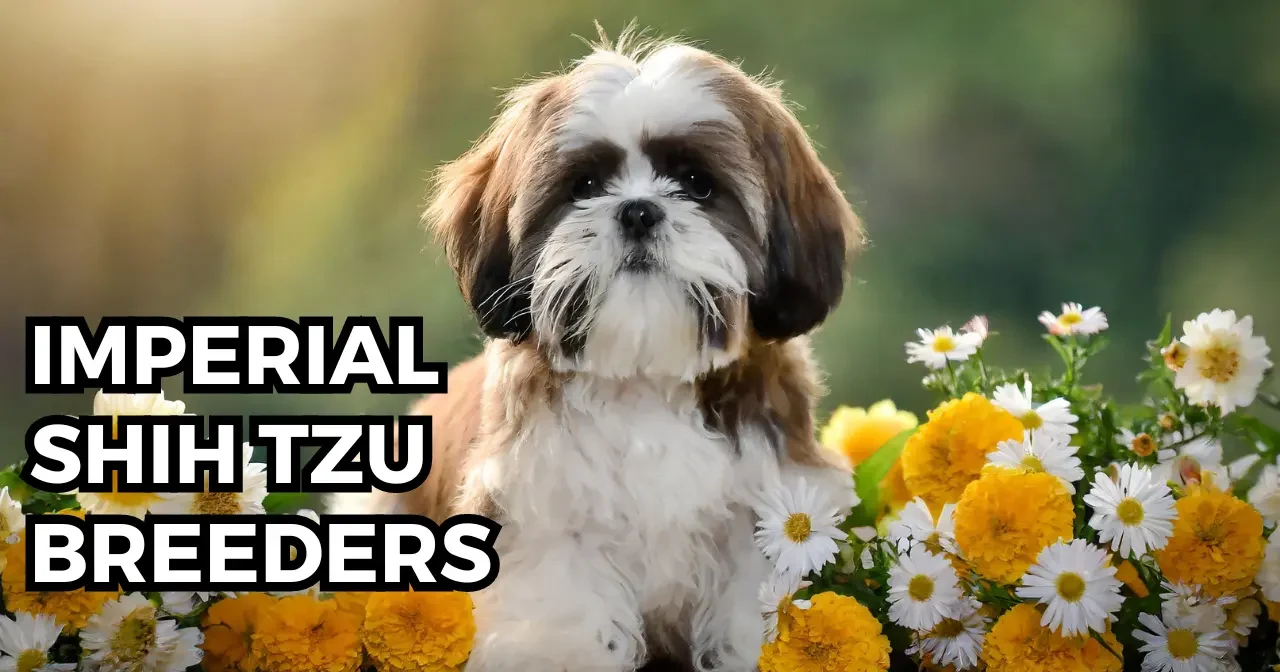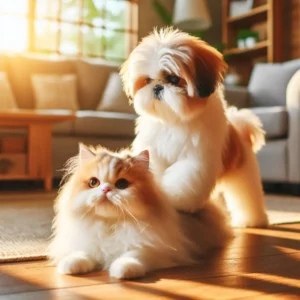What Was Shih Tzus Bred For? Breed History Explained
Introduction to the Shih Tzu breed
Welcome to our blog post on Shih Tzus, the adorable and charismatic breed that has captured the hearts of dog lovers worldwide! If you’ve ever seen a Shih Tzu, with its flowing locks and playful demeanor, you might wonder what this lovable little pup was bred for. Well, hold onto your seats as we take you on a journey through time to uncover these delightful companions’ fascinating origin, purpose, and evolution. From their ancient roots in China to their modern-day roles as beloved family pets, get ready to discover everything there is to know about why Shih Tzus were bred. So please sit back, relax (preferably with your furry friend by your side), and let’s dive into the captivating world of Shih Tzu history!
Origin and history of the Shih Tzu breed
The origin of the Shih Tzu breed is shrouded in mystery, adding to its allure and charm. Believed to have been bred in ancient China, royals and nobles highly favored these adorable little dogs. They were treasured companions within imperial households, their luxurious coats carefully groomed and adorned with elaborate accessories.
Legend has it that the Shih Tzus were created by carefully breeding Tibetan temple dogs with Chinese breeds such as Pekingese and Lhasa Apso. Their purpose was clear – to be loyal companions and symbols of good fortune. It is said that they even had a spiritual connection, often regarded as sacred beings capable of bringing peace and harmony wherever they went.
Over time, the breed went beyond palace walls into the homes of commoners who fell in love with their endearing personalities and striking appearance. Throughout history, Shih Tzus has remained steadfastly loved by people from all walks of life.
Today’s modern-day Shih Tzu may look slightly different from their ancestors due to selective breeding practices over centuries. However, they still retain many distinct characteristics that make them unmistakable – their compact size, expressive eyes full of warmth, playful nature, and affectionate temperament.
Despite changes throughout history, one thing remains constant: The devotion between humans and Shih Tzus continues to grow stronger daily!
Stay tuned for our next section to explore how this delightful breed has adapted to modern times!
Purpose and uses of Shih Tzus in ancient China
The Shih Tzu breed has a long and storied history that dates back thousands of years. In ancient China, these small yet regal dogs were highly prized for their purpose and use in the royal courts.
One of the primary purposes of Shih Tzus in ancient China was to serve as companions to the nobility. These dogs were considered symbols of wealth and prestige, often given as gifts to emperors and other important figures. Their luxurious coats and elegant demeanor made them perfect additions to the royal households.
In addition to being beloved companions, Shih Tzus also had practical uses in ancient China. They were believed to have healing powers and were often used as therapy dogs for those suffering from physical or mental ailments. Their calming presence brought comfort and peace to those in need.
Shih Tzus were also valued for their ability to alert their owners of potential dangers or intruders. With their keen senses, they bark loudly at any sign of trouble, making them excellent watchdogs despite their small size.
During ancient times, Shih Tzus played significant roles as cherished pets, therapy animals, and protectors in Chinese society. Their purposeful existence showcased not only their beauty but also their intelligence and loyalty – traits that continue to be admired by dog enthusiasts today.
Evolution of the Shih Tzu breed over time.
The Shih Tzu breed has a rich and fascinating history that spans centuries. Originally from China, these adorable little dogs were bred to be companions for royalty. But how did they evolve into the beloved pets we know today?
The Shih Tzus were highly valued for their beauty and charm. They were pampered by Chinese emperors and kept in luxurious palaces. However, it wasn’t until they made their way to Europe in the 1930s that their popularity began to soar.
During this time, European breeders started refining the breed’s appearance through careful breeding selection. They aimed to create a dog with a distinct look – round face, large eyes, and flowing coat – that would capture people’s hearts.
Over time, these efforts paid off as more people fell in love with the enchanting personality and irresistible cuteness of Shih Tzus. They became sought-after pets not only among royalty but also among ordinary families worldwide.
As the years went by, further refinement took place to ensure health and temperament improvements within this breed line. Today’s Shih Tzu is still as captivating as ever but now comes in various colors such as gold, silver, black or white.
Despite being compact (usually weighing 9-16 pounds), these little dogs are known for their big personalities. They are friendly, affectionate creatures who thrive on human companionship, making them perfect family pets or great friends for seniors!
Shih Tzus have certainly come a long way since their days of living exclusively amongst nobility! Now cherished by millions worldwide, they continue to bring joy wherever they go with those cute button noses sniffing out new adventures!
Modern-day roles of Shih Tzus
Modern-day roles of Shih Tzus have evolved from their ancient origins to become beloved companions and family pets. These pint-sized pups may no longer have the same practical purposes they once had, but they bring joy and happiness to countless households worldwide.
One of the primary roles of Shih Tzus in modern society is as a loving companion. With their affectionate nature and desire for human company, these dogs quickly become integral to any family. Shih Tzus excels at providing unconditional love and friendship, whether snuggled up on the couch or accompanying their owners on outdoor adventures.
Another role that Shih Tzus often takes on today is that of a therapy dog. Their gentle temperament and small size make them ideal candidates for comforting those in need. They visit hospitals, nursing homes, and schools, spreading smiles wherever they go.
Common Characteristics and Traits of the Breed
Shih Tzus are known for their distinctive appearance and lovable personalities. One of their most recognizable traits is their luxurious, long flowing coat that requires regular grooming to keep it looking its best. Their large, round eyes give them an innocent and expressive look that can melt anyone’s heart.
In terms of size, Shih Tzus are small dogs with a sturdy build. They typically weigh between 9 and 16 pounds, making them perfect companions for those who prefer smaller breeds. Despite their compact size, they have a confident and bold personality, which adds to their charm.
These little furballs also have a friendly nature, making them excellent family pets. They get along well with children and other animals when socialized properly from an early age. Shih Tzus thrives on human companionship and love being the center of attention.
While they may be small in stature, Shih Tzus have big personalities! They are known for being playful, affectionate, and sometimes even stubborn. However, this only adds to their endearing qualities as they bring joy and laughter into the lives of those around them.
Another characteristic that sets Shih Tzus apart is their adaptability to various living situations. Whether you live in a spacious house or a cozy apartment, these adaptable pups will adjust accordingly as long as they receive plenty of love and care.
Shih Tzus possesses an irresistible combination of physical beauty and delightful personality traits, making them one-of-a-kind pets. Their charming appearance and loving nature make it easy to understand why they continue to be such popular companions around the world.
Conclusion:
In conclusion, the Shih Tzu breed has a fascinating history that dates back to ancient China. From being the cherished pets of royalty to becoming a beloved companion dog, they have undergone a remarkable transformation over the centuries. Nowadays, they remain a popular breed thanks to their friendly and playful nature. Whether you’re a dog lover or just a history buff, the story of the Shih Tzu is worth exploring.
Q1: What is the history of the Shih Tzu breed?
The Shih Tzu breed originated in China, dating back to ancient times. They were highly favored by Chinese royalty and were considered sacred.
Q2: What were Shih Tzus originally bred for?
Shih Tzus were originally bred as companion dogs for Chinese royalty. Their friendly disposition and affectionate nature made them ideal lap dogs and loyal companions.
Q3: How has the breed developed over time?
Over time, Shih Tzus were crossed with Pekingese and Pugs to achieve the distinct appearance we see today. The breed’s focus shifted from being exclusively royal companions to beloved household pets.
Q4: What are the common physical characteristics of a Shih Tzu?
Shih Tzus typically have a distinctive compact body, a broad, round head with a short muzzle, large expressive eyes, and a luxurious double coat in various colors. They have a distinctive “topknot” of hair on their head.
Q5: What are the temperament and personality traits of a Shih Tzu?
Shih Tzus are known for their friendly and outgoing nature. They are affectionate alert, and make excellent family pets. They enjoy human companionship and are generally good with children and other animals.
Q6: What are the health issues associated with the Shih Tzu breed?
Shih Tzus are prone to certain health issues, including brachycephalic airway syndrome due to their flat faces, dental problems, and eye issues such as cataracts. Regular veterinary check-ups and proper care can help manage these potential health concerns.
Share this content:















Post Comment